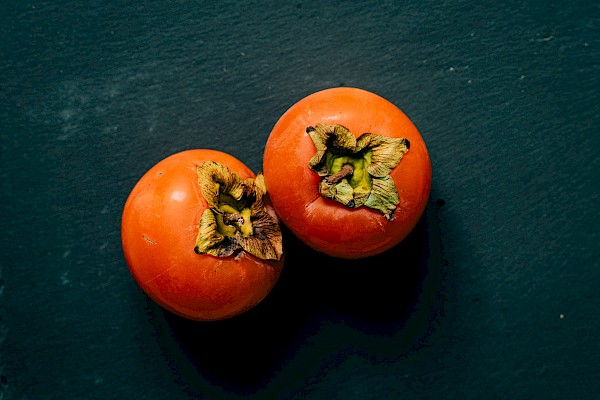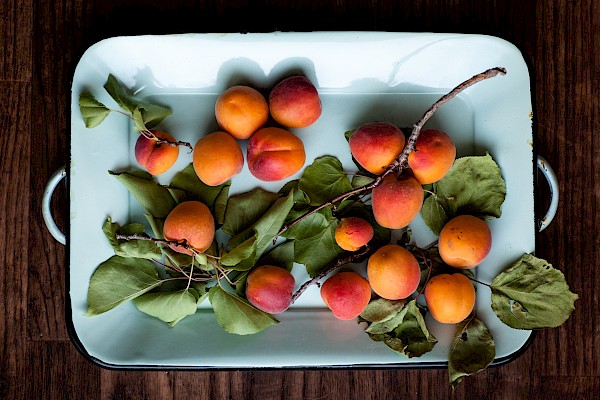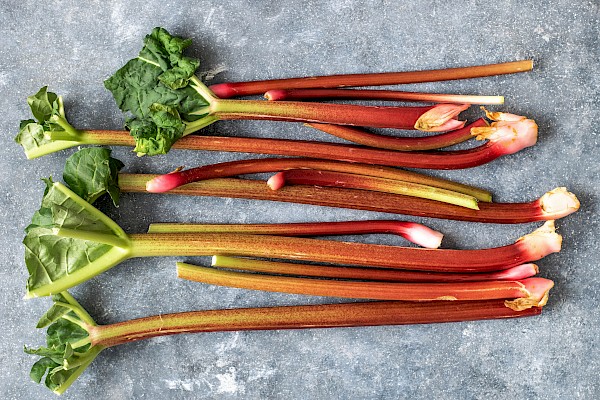Basil
The certain something in many Italian dishes, which makes some of the world’s favourite foods such as pizza or pasta into something really special is – basil! This herb should not be underestimated, because it is not just a culinary delight, but also a valuable medicinal plant with many healthy properties.
For example, basil can relieve inflammations and joint pain, calm the stomach and reduce stress, and can even put multi-resistant bacteria in their place. What’s more, basil is highly nutritious, because it contains calcium, iron, beta-carotene and vitamin K.
Ocimum basilicum
When we in Europe talk about “basil”, we most often mean one of the many varieties of “Ocimum basilicum”, which has been cultivated around the Mediterranean for approximately 3500 years.
Contrary to its modern image as a culinary highlight, the aromatic herb was used as a medicinal and ritual plant for a long time. For example, the ancient Egyptians placed basil in the Pharaohs’ tombs and used it to protect themselves from spirits and demons.
Today basil is no longer used for exorcism, but instead is one of the world’s favourite herbal plants. Isn’t it the basil leaf, more than anything else, that turns plain pasta with tomato sauce into a dish fit for a king? Do you love basil as much as we do? Then you will certainly be interested in the health benefits of and nutrients in this beautifully green, full-flavoured herb. But first, here are a few more fascinating facts about basil!
Origin
Although we frequently associate basil with the southern European countries of Italy and Spain, and their Mediterranean cuisine, its original home is in a very different place – east India and Iran.
Season
When basil grows out of doors, it is in season right now – June to September. But greenhouse-grown basil can be bought at any time of year.
Varieties
Would you have thought that approximately 60 basil varieties with different appearances and aromas are cultivated worldwide? They can be red and purple, pale or dark green, with leaves large or small, or smooth or wrinkled. Depending on the variety, basil can smell like cinnamon, allspice, cloves, aniseed... sometimes the aroma is floral, sometimes spicy-sweet. The following varieties are the best known:
- Dark opal: recognisable by its red leaves and aromatic clove-like notes.
- Piccolino: as the name implies, this compact variety has small, aromatic leaves.
- Tulsi: also known as Indian basil, this has a tart, peppery flavour.
- Thai basil: also known as holy basil, this variety is sweet with an aroma of liquorice and aniseed.
- Lemon basil: a strongly scented variety with a full, sweet, citrussy flavour.
What does basil contain?
Basil contains many minerals, trace elements and vitamins, such as copper, manganese and vitamin C. The following ingredients are particularly significant for our health (per 50 g fresh basil):
- Beta-carotene (2000 µg): this amounts to at least half of the beta-carotene in carrots, which are the top source of beta-carotene. Our bodies use beta-carotene as a raw material for making vitamin A. It has antioxidant and anti-inflammatory properties, nourishes the mucous membranes, keeps our nerve cells healthy and is important for our eyesight. The body can produce approximately 330 µg of vitamin A from the above quantity of beta-carotene (daily requirement approximately 800 µg).
- Iron (3 mg): essential for building blood cells (daily requirement 10 – 15 mg).
- Calcium (125 mg): important for teeth and bones (daily requirement 1000 mg).
- Vitamin K (88 µg) in just 20 grams of basil. Two large tablespoons of basil pesto are more than sufficient to cover 100 percent of the recommended daily amount of vitamin K (70 µg). This vitamin is important for bone metabolism and blood coagulation. What’s more, it also contributes to a healthy cardiovascular system.
How basil is good for our health
Basil gets its intensive spicy-sweet flavour from the essential oils it contains, primarily eugenol, estragole and thymol. They and the polyphenols and flavonoids (secondary plant substances) are responsible for the various health benefits. These include fighting off harmful free radicals in our bodies and helping our cells to remain healthy. Like copper and manganese – two trace elements – they support the body to neutralise harmful free radicals.
Basil’s essential oils in basil, especially cineole and linalool, will soothe an irritated stomach and can relieve gallbladder problems.
There is scientific evidence for both the anti-inflammatory and anti-bacterial properties of basil. These properties derive from the enzyme content that corresponds to active substances such as ibuprofen (an anti-inflammatory painkiller); this explains why basil was used in the Middle Ages as a natural fever remedy.
Basil also contains iron. This mineral is essential for the production of the blood pigment haemoglobin in red blood cells.
Regarding the health benefits of basil, it is important to know that dried basil is rarely a successful substitute for fresh, even in an emergency. Besides the fact that the flavour is very different, dried basil has also lost most of the precious ingredients.
Tips and tricks for basil
- Buying basil: in summer, it’s worth buying fresh bunches of basil direct from the grower. If you have never tried basil in this form, you’re in for a treat, because it surpasses any potted basil in aroma and flavour. Of course, there is no reason not to use potted basil at other times of year. If you succeed in growing basil on your windowsill or balcony, then you will find it keeps for a while with the right care, and you will be able to pick fresh leaves again and again. How wonderful!
- Storing basil: if you have bought a bunch of basil, simply rinse it, shake it dry, put into a freezer bag and then place it in the vegetable drawer of your fridge. If you have basil in a pot on your windowsill or balcony, you should check moisture levels regularly. One-tenth of the pot volume is the ideal daily quantity of water for the basil plant. It’s simplest to put the pot onto a saucer and water it from below. Basil is also a sun-worshipper, so make sure it has plenty of light and warmth.
- Preparing basil: basil leaves are usually used whole. All you need to do is pluck them from the stalks. When doing this, you should break off the whole stem above the leaf axil rather than plucking the individual leaves from the plant, because this will encourage the plant to keep growing. If you want to cut or chop your basil, you should do this just before serving, or the aroma and medicinal ingredients will dissipate. Even better, tear the leaves. Important: never cook basil. If you do, it will lose most of its essential oils and most of its flavour.
Our recipe tip
Basil risotto with pine nuts
(Ingredients for 4 people)
- 450 g risotto rice
- Approx. 1 l vegetable stock
- 1 bunch basil
- 2 onions
- 20 pine nuts
- 8 tablespoons olive oil
- 2 tablespoons Parmesan, grated
- Sea salt
- Pepper
Method: Rinse the fresh basil leaves briefly with cold water and gently pat dry with a piece of kitchen towel. Then put into the food processor with 4 to 5 tablespoons olive oil and a little salt and pepper, and blitz to a smooth sauce. Alternatively, you can use a hand blender or pestle and mortar. Chop the onions finely and fry for a few minutes in a pan with 3 tablespoons olive oil. Add the rice, stir briefly, then pour over some of the hot stock. Cook the risotto for approximately 15 to 20 minutes, adding more stock as you go, and stir continuously so it doesn’t burn. When the risotto is cooked, stir in 2 tablespoons of grated Parmesan and the previously prepared basil pesto. Finally, take the risotto off the heat, leave to stand for approximately 5 minutes and finally divide between plates and garnish with roasted pine nuts and a few basil leaves. (Source)
References:
Koelle, K. (2020). Basilikum. Eat smarter. Available on: https://eatsmarter.de/lexikon/warenkunde/kraeuter/basilikum
Li, H., Ge, Y., Luo, Z., Zhou, Y., Zhang, X., Zhang, J., & Fu, Q. (2017). Evaluation of the chemical composition, anti-oxidant and anti-inflammatory activities of distillate and residue fractions of sweet basil essential oil. Journal of food science and technology, 54(7), 1882–1890.
Rehberg, C. (2021). Basilikum – Gewürz und Heilpflanze. Zentrum der Gesundheit. Available on: https://www.zentrum-der-gesundheit.de/ernaehrung/lebensmittel/gewuerze/basilikum
Opalchenova, G., & Obreshkova, D. (2003). Comparative studies on the activity of basil - an essential oil from Ocimum basilicum L. - against multidrug resistant clinical isolates of the genera Staphylococcus, Enterococcus and Pseudomonas by using different test methods. Journal of microbiological methods, 54(1), 105–110.
Sestili, P., Ismail, T., Calcabrini, C., Guescini, M., Catanzaro, E., Turrini, E., Layla, A., Akhtar, S., & Fimognari, C. (2018). The potential effects of Ocimum basilicum on health: a review of pharmacological and toxicological studies. Expert opinion on drug metabolism & toxicology, 14(7), 679–692.
Sienkiewicz, M., Łysakowska, M., Pastuszka, M., Bienias, W., & Kowalczyk, E. (2013). The potential of use basil and rosemary essential oils as effective antibacterial agents. Molecules (Basel, Switzerland), 18(8), 9334–9351.
 subscribe to newsletter
subscribe to newsletter


